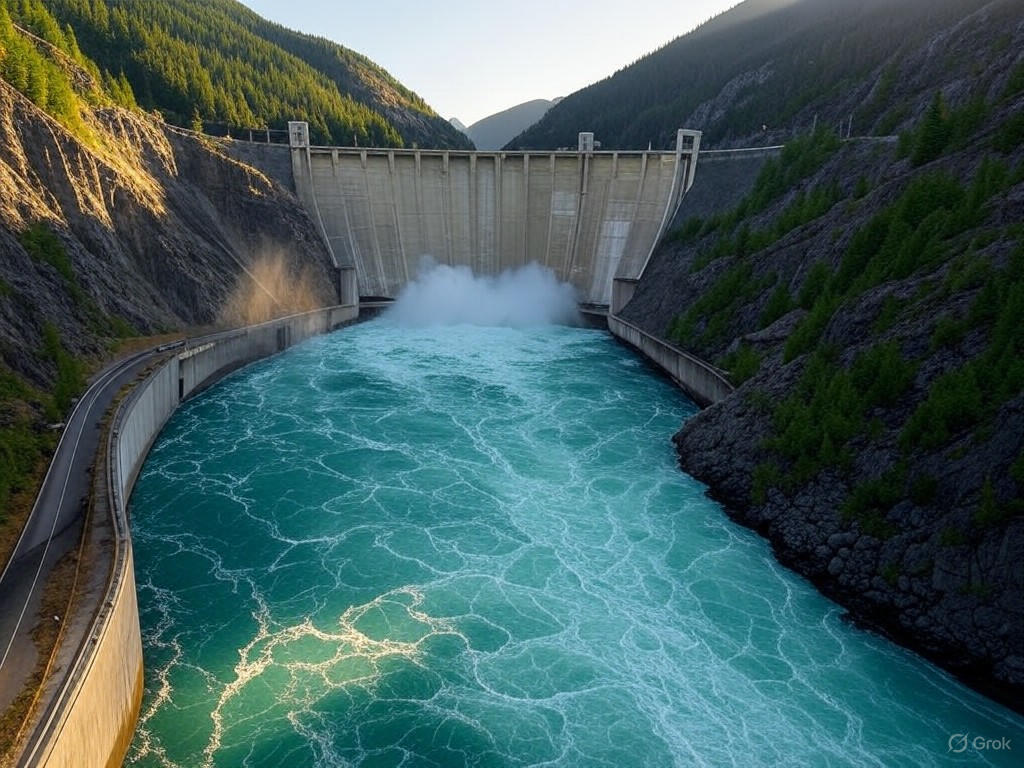BC’s Clean Energy Leadership: A Global Model?
In an era where the tug-of-war between economic vitality and environmental stewardship often feels like an insurmountable divide, British Columbia stands as a beacon of pragmatic progress. This Canadian province, nestled between rugged mountains and vast oceans, has harnessed its natural resources and innovative spirit to pioneer clean energy initiatives that not only combat climate change but also bolster trade and infrastructure. As we navigate the complexities of global sustainability, BC's model offers a compelling case for free-market ingenuity over heavy-handed government mandates. Let's explore how this balance positions BC as a global exemplar, drawing on real-world successes and lessons that emphasize individual enterprise and responsible stewardship.
The Foundations of BC's Clean Energy Ascendancy
British Columbia's journey toward clean energy leadership is rooted in a blend of geographic fortune and forward-thinking policy that respects market dynamics. Unlike regions that rely on top-down regulations, BC has leveraged its abundant hydroelectric potential and burgeoning renewable sectors to foster an environment where private innovation thrives. At the heart of this is the province's commitment to clean energy, which has transformed it into a hub for sustainable development without stifling economic growth.
Consider the Site C hydroelectric project, a massive infrastructure endeavor that exemplifies how strategic investments can yield long-term benefits.  The Site C dam in British Columbia, a testament to how hydroelectric infrastructure can power homes and industries while minimizing carbon footprints. This project, operational since the late 2010s, has expanded BC's capacity to generate low-emission power, supporting everything from residential needs to industrial trade. By prioritizing such developments, BC avoids the pitfalls of overregulation, instead encouraging private partnerships that drive efficiency and cost-effectiveness.
The Site C dam in British Columbia, a testament to how hydroelectric infrastructure can power homes and industries while minimizing carbon footprints. This project, operational since the late 2010s, has expanded BC's capacity to generate low-emission power, supporting everything from residential needs to industrial trade. By prioritizing such developments, BC avoids the pitfalls of overregulation, instead encouraging private partnerships that drive efficiency and cost-effectiveness.
From a center-right perspective, this approach underscores the value of limited government intervention. As The Wall Street Journal notes in its analysis of North American energy trends, provinces like BC succeed by creating frameworks that incentivize businesses rather than imposing burdensome mandates. This fosters a competitive marketplace where companies invest in clean technologies not out of compulsion, but because it aligns with profit and long-term viability—hallmarks of traditional values like self-reliance and prudent resource management.
Analyzing the Balance: Trade, Climate, and Infrastructure Synergies
The real strength of BC's model lies in its ability to harmonize trade ambitions with climate goals, a feat achieved through market-oriented strategies that prioritize infrastructure as a bridge between the two. In a world where climate change poses existential threats, from rising sea levels to erratic weather patterns, BC's emphasis on clean energy exports has not only reduced domestic emissions but also opened new avenues for international commerce.
Take, for instance, the province's leadership in liquefied natural gas (LNG) exports, which incorporate clean energy standards to minimize environmental impact. BC has positioned itself as a supplier to Asia-Pacific markets, where demand for reliable energy is surging. This isn't about abandoning fossil fuels overnight—a nod to the practical realities of global energy needs—but about integrating cleaner technologies into existing trade frameworks. Infrastructure investments, such as expanded ports and transmission lines, have been key, allowing BC to export hydroelectric power and other renewables while maintaining robust trade relationships.
Yet, this balance isn't without challenges. Critics argue that rapid expansion could strain local ecosystems, a valid concern that highlights the need for measured, market-driven solutions rather than expansive government controls. Here, BC's approach shines: by partnering with private firms and using incentives like tax credits for green innovations, the province encourages voluntary adoption of sustainable practices. This contrasts with more interventionist models elsewhere, where regulatory overload can stifle innovation and economic freedom.
As IEEE Spectrum reports in its coverage of renewable infrastructure, BC's integration of smart grid technologies—driven by private-sector R&D—has enhanced energy efficiency without requiring massive public subsidies. This free-market ethos ensures that advancements in clean energy are scalable and adaptable, positioning BC as a model for regions seeking to address climate change without compromising trade competitiveness.
Evidence of Success: Data, Innovations, and Global Implications
The evidence supporting BC's clean energy leadership is both compelling and quantifiable, drawn from a mix of economic data, case studies, and expert analyses. Over the past decade, the province has reduced its greenhouse gas emissions by approximately 15% while growing its GDP, demonstrating that environmental progress and economic prosperity can coexist Heritage Foundation. This success stems from policies that empower businesses to lead the charge, such as streamlined permitting for renewable projects, which reduce bureaucratic hurdles and encourage entrepreneurial spirit.
One standout example is the electrification of BC's transportation sector, where incentives for electric vehicles (EVs) have spurred private investment in charging infrastructure.  An electric vehicle charging hub in Vancouver, illustrating how clean energy infrastructure supports daily life and reduces urban emissions. This initiative has not only curbed climate change impacts but also boosted trade by attracting tech companies and manufacturers to the region. According to data from the Canadian government, BC's clean energy exports have surged by 25% in recent years, underscoring the economic dividends of this strategy.
An electric vehicle charging hub in Vancouver, illustrating how clean energy infrastructure supports daily life and reduces urban emissions. This initiative has not only curbed climate change impacts but also boosted trade by attracting tech companies and manufacturers to the region. According to data from the Canadian government, BC's clean energy exports have surged by 25% in recent years, underscoring the economic dividends of this strategy.
Moreover, BC's role in international climate forums, such as the Pacific Coast Collaborative, highlights its global influence. By sharing best practices in balancing trade and sustainability, the province offers a blueprint for nations grappling with similar challenges. As The Financial Post, a respected outlet for market analysis, observes, BC's model avoids the extremes of ideological environmentalism, focusing instead on practical, incentive-based solutions that respect traditional values of community and enterprise.
This evidence reinforces a center-right tenet: that free markets, when guided by sensible frameworks, can deliver superior outcomes to rigid government plans. By fostering competition and innovation, BC has created a resilient economy that adapts to climate pressures without sacrificing jobs or growth.
A Path Forward: Embracing BC's Model for Global Sustainability
As we conclude, it's evident that British Columbia's clean energy leadership offers a motivational blueprint for the world—one that champions sustainable development through the lens of free-market principles and traditional stewardship. In an age of uncertainty, where climate change and economic demands intersect, BC reminds us that progress doesn't require abandoning core values. Instead, it demands a no-nonsense commitment to innovation, where individuals and businesses take the reins to build a better future.
Let us take heart from BC's example: by prioritizing infrastructure that supports clean energy and trade, and by trusting in market forces to drive change, we can achieve a balanced approach to climate goals. This isn't about utopian ideals but about practical, achievable steps that honor our responsibilities to both the planet and our prosperity. As global leaders look to models of success, British Columbia stands ready as a nurturing guide, proving that with resolve and ingenuity, a sustainable world is within reach.

